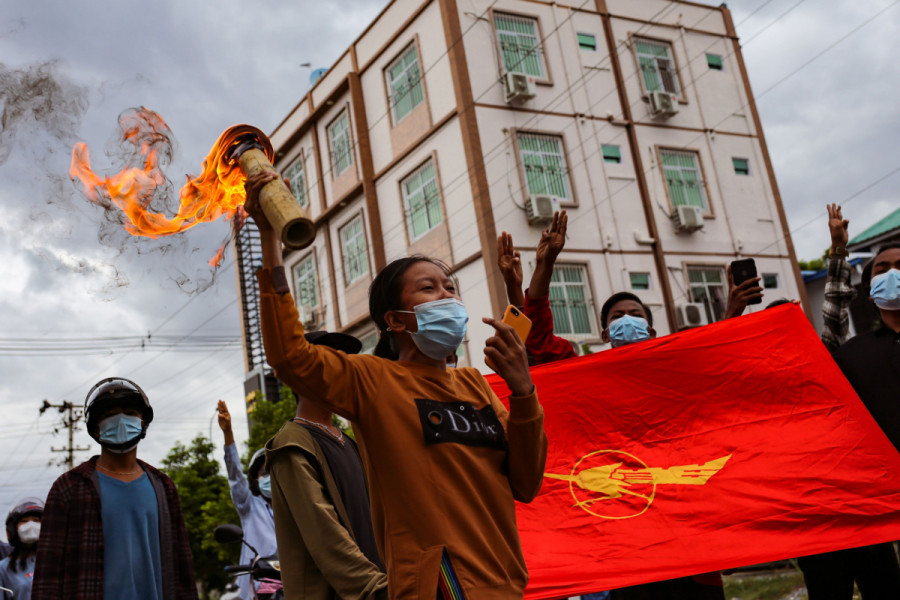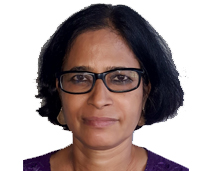Columns
Turmoil in Myanmar
Political fragmentation will make it difficult for the country to hold together.
Smruti S Pattanaik
Since the military takeover in Myanmar on February 1, 2021, the country has been in political turmoil. But such turbulence is nothing new here. Myanmar's journey towards democracy has been intermittent. Following the Saffron Revolution in 2007, Myanmar got its third constitution in 2008 which gave the military 25 percent of the seats in both houses of Parliament and control over the ministries of home affairs, defence and border affairs. The constitution came into force in 2011, and elections were held in 2015 which the National League for Democracy (NLD) won.
The NLD’s supreme leader Aung San Suu Kyi, who was disqualified from becoming president under this military-drafted constitution, nominated her trusted associate Htin Kyaw to the post. He resigned in 2018 over the Rohingya crisis, and Winn Myint took over.
The Rohingyas were barred from participating in the 2020 election. While the NLD claimed victory at the polls, the military-backed Union Solidarity and Development Party charged that the elections were not free and fair. The short-lived democracy gave away to a coup in 2021. Aung Sang Suu Kyi and her party leaders were arrested and accused of election fraud. The constitution remains suspended as the military has strengthened its grip on the country, disregarding international opinion.
Democratic activists and ethnic militant groups in Myanmar are adept at fighting the military. In September 2021, democracy activists formed a parallel government known as the National Unity Government with the objective of unifying all ethnic groups against the Tatmadaw, the Myanmar armed forces. The first confrontation between the democracy activists and the military took place in March 2021 in Saigiang, and subsequently spread to other parts of the country. According to some estimates, nearly 2,000 civilians and activists have been killed in this violence. The international community has been extremely critical of this brutal crackdown, and has called for the release of political prisoners and the restoration of democracy.
The National Unity Consultative Council has been formed to spearhead the movement. It is committed to a federal union and decentralisation of power that remains at the core of ethnic grievances and long-running insurgency in some areas. Most importantly, the agenda includes repealing the 1982 citizenship law, which has been the root cause of Rohingya statelessness. Even then, the council has not been able to attract many of the ethnic armed groups which have been battling the military for a long time in areas dominated by their community. Some of these groups want to negotiate with the military independently and often adopt a hedging strategy.
The nationwide ceasefire that was negotiated in 2015 does not hold any longer. This time, a majority of the Barmar people, the junta’s support base, have been sympathetic to the democratic movement. The pro-democracy uprising called Spring Revolution is poised to pressure the military like never before.
But the armed struggle remains fragmented, and the National Unity Government lacks a central authority which can exercise overarching control over various groups. Moreover, its leaders are in exile, and so controlling the movement within the country is a major challenge. The ethnic armed groups fighting the Myanmar state have their own objectives. Given this fragmentation, the possibility of defeating the junta through violence remains farfetched at the moment.
The Tatmadaw government has stone-walled international criticism. The Association of Southeast Asian Nations (ASEAN) has not been able to exert pressure on Myanmar as there is a division of opinion on its approach to the country. Myanmar executed four pro-democratic activists in July this year following a closed trial. ASEAN called the act "reprehensible”.
ASEAN, of which Myanmar became a full member in 1997, had invited Army Chief Min Aung Hlaing to attend the ASEAN meeting in Jakarta in 2021 and negotiated a five-point consensus—a road map to end violence, negotiation with pro-democratic activists and return to democracy. Myanmar’s disregard for this consensus was apparent when it refused to grant permission to an ASEAN special envoy to meet with Aung San Suu Kyi and other jailed leaders. In a significant move, ASEAN did not allow General Min Aung Hlaing to attend the biannual ASEAN Summit in October, saying only “non-political” bureaucrats or officials could attend the meeting, and Myanmar refused to send a representative.
In spite of international condemnation, there is division within ASEAN about engaging Myanmar. Both India and China, who are competing for influence in Myanmar, continue to engage the Tatmadaw. Russia and Pakistan continue to supply Myanmar's military with arms.
The impact of the military coup and the resultant conflict and violence has had a regional impact as is evident from the refugee flow. In the 2017 violence, Myanmar expelled around 7 million Rohingyas from Rakhine state in an act of ethnic cleansing.
Though Bangladesh was flooded with Rohingya refugees much before the coup, the conflict has widened. Now other ethnic groups like the Chins and other pro-democracy activists have fled the military crackdown and have sought refuge in countries bordering Myanmar—India and Thailand. Myanmar has never had full control of its periphery. With ethnic fragmentation and deepened fault lines, the conflict is transforming the border areas. Political fragmentation will make it difficult for the country to hold together, with serious implications for the region.




 17.12°C Kathmandu
17.12°C Kathmandu













%20(1).jpg&w=300&height=200)

